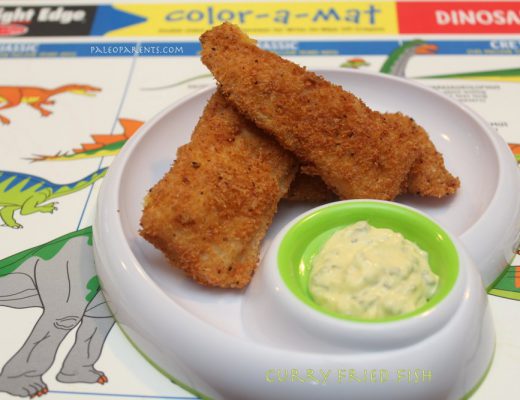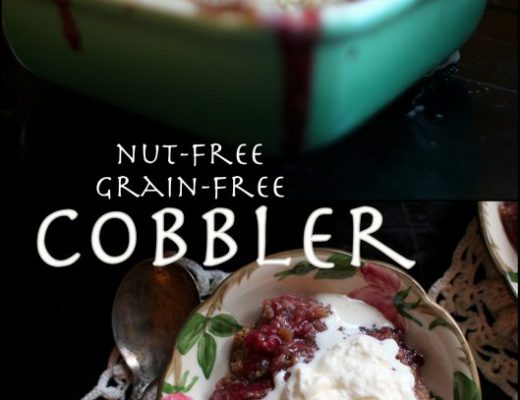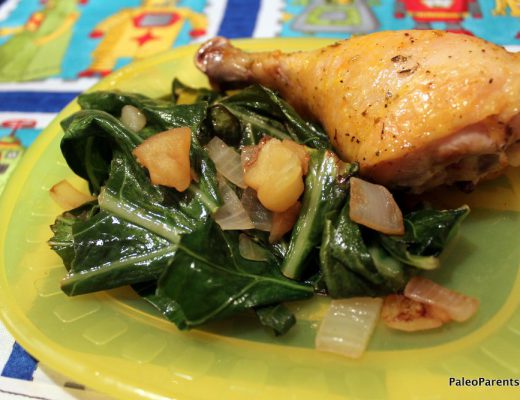Wednesdays used to be our Guest Blogger Series day; but, there’s just so many new and wonderful Paleo and real-food bloggers out there that we’ve expanded our series. We hope you enjoy the new view points and unique content; if so, we encourage you to show these guest bloggers your support by visiting their blog and social media links at the end of this post!
Today we are visited by our friend Russ, The Domestic Man. We’ve known Russ and his family for nearly a year now and they now attend our meat-ups fairly regularly – even though we’re an hour drive apart! We also had the fortune to dine with Russ while in Baltimore visiting the National Aquarium, and his son Oliver joined us for the Gather Halloween photo shoot.
If you are not already a fan of The Domestic Man, you are in for a treat! I highly suggest you follow his blog for fantastic recipes, tailored to The Perfect Health Diet. His yuca fries inspired our own recipe in Beyond Bacon and I’ve heard amazing things about his now famous cast iron grain-free pizza. On his blog he posts a new and unique recipe every Tuesday that is gorgeously photographed and seriously good eats!
Not only is he a fantastic paleo-friendly food blogger, but he has a tremendous story featuring a stroke at age 24, dying on purpose for a surgery, and an extremely rare autoimmune disease diagnosis. And of course, because we like to befriend top-talent, his incredibly adorable and nice family has become personal friends of ours. This week he writes about how his son, who I dare you not love at first sight, has taken to real foods.

Meet Oliver. He turned four years old last month, and has been eating the Perfect Health Diet version of Paleo (includes white rice and some dairy) since he before he was two. He loves Star Wars, Legos, and anything Disney. He has his ups and downs, but for the most part he’s a pretty adventurous eater, and I thought it would be fun to share what we’ve done to encourage healthy eating behaviors.

First, let me give you a glimpse into how we eat at home. This is a typical meal setup at our house – one vegetable, one starch, and one meat – with equal portions of each. My wife and I also complement our meals with a small salad and/or fermented veggie side dishes, but this is basically what you can expect on our dinner table most nights. Breakfast for him is typically eggs, some meat, and berries or another fruit. Lunch is usually leftovers from dinner. He drinks a small cup of whole milk with breakfast and dinner, and drinks water at all other times. Every once in a while I’ll give him some kefir or sips of my homemade kombucha (which he calls “the sour juice”).
Before I get into specifics of what I do to encourage his eating habits, let’s look at some basics. There are a few suggestions that Matt and Stacy make in Eat Like a Dinosaur that ring especially true in our house, which I’d like to share:
Don’t force-feed. The standing rule in our house is that he has to take a bite of everything on his plate before being excused or having more of something he likes. This will help condition him to accept the fact that he can’t flat-out refuse to try foods, and hopefully will train his taste buds to be more accepting of new tastes.

They won’t starve. We rarely allow him to have snacks unless we’re having to stretch out his mealtimes because we’re out and about (the pictures above were from our recent trip to Disney World, where we supplemented some underwhelming meals with snacks). Since he sits down to eat three square meals a day, if he overeats at one meal (some mornings he will eat three eggs, several ounces of bacon, berries, and two bananas without blinking an eye), it’s natural for him to only pick at his lunch. If he doesn’t like a meal, we don’t make something else for him; he chooses to either eat what’s in front of him or wait for the next meal. This step has helped to keep his hunger and mood swings very manageable.
Be prepared to make concessions. As Oliver ages, it’s been hard for us to balance healthy eating with the idea that we’re depriving him of certain food memories that we had growing up – for better or for worse. We like to have treats now and then, so it’s only natural to allow Oliver to have treats as well. When my parents sent him some Pop Rocks a few months back, I couldn’t resist letting him have a taste, knowing full well that there isn’t one ingredient worth eating in the little package (see the video above).
Desserts that include chocolate or ice cream are rare, maybe once or twice a month, but we do let him have a piece of fruit after dinner when he asks for something (usually only once a week).

Okay, so now let’s talk about my rules for helping turn him into a little foodie.
1. He eats what we eat. I don’t dumb down his meals, with the exception of spiciness. I think this is the most important thing parents can do for their kids. In France and Japan, children are served full-spectrum meals at schools and at home, and we try to model our habits after that idea. Not only does it help develop a more sophisticated palate, I feel it makes him more apt to eat what’s on his plate since we’re all eating the same thing. I also encourage him to try my random fermented veggie creations, but I don’t force them on him, since they’re an acquired taste.
2. Moderate carb intake. Breast milk is naturally higher in carbs than in recorded Paleolithic-style diets (39% vs 13-20%), and a child’s brain uses a higher proportion of calorie consumption than in adults. Since brains are fed by glucose (carbs) as well as ketones, it makes sense that children have higher carbohydrate needs than adults. So we feed Oliver a moderate carb diet (30% of calories) using rice, potatoes, and sweet potatoes. I like to think that balancing Oliver’s macronutrients helps to keep him nourished and satisfied, which makes meal times less stressful for everyone. Bear in mind that ketogenic diets (very low carb) have been found to help with some behaviors in children, especially neurologic issues, so individual results will vary.
3. Use healthy umami preparations to encourage eating. I’m a big proponent of using high-reward (“tasty”) preparations of healthy foods that may otherwise be bland. For example, we almost always cook our rice in chicken stock to increase its tastiness, and we sprinkle on furikake (Urashima makes a natural version that contains only seaweed, shaved bonito, and seaweed) to make it even tastier. I think furikake is an important addition to Oliver’s meals because it’s a very strong and “fishy” taste, which he grew to love, and it probably makes him more likely to try new seafoods in the future. Mushrooms and fish sauce are also great sources of umami.

So really, that’s about it. Oliver eats what we eat, with an emphasis on making bland foods tasty, and I use a hint of science when figuring out his macronutrient ratios. The rest is just tenacity and consistency.
 Russ is a Paleo-friendly home chef and blogger who writes under the name The Domestic Man. After suffering a number of medical hardships, he regained his health through changes in his diet in 2010. He offers a unique culinary approach in the Paleo world: The Domestic Man is less a place for new kitchen experiments and more a site dedicated to re-popularizing traditional heritage foods that are either already healthy or easily modified to meet his dietary parameters.
Russ is a Paleo-friendly home chef and blogger who writes under the name The Domestic Man. After suffering a number of medical hardships, he regained his health through changes in his diet in 2010. He offers a unique culinary approach in the Paleo world: The Domestic Man is less a place for new kitchen experiments and more a site dedicated to re-popularizing traditional heritage foods that are either already healthy or easily modified to meet his dietary parameters.
Blog – http://thedomesticman.com/
Facebook – http://facebook.com/thedomesticman
Twitter – https://twitter.com/onionsaregross
Pinterest – http://pinterest.com/thedomesticman/




